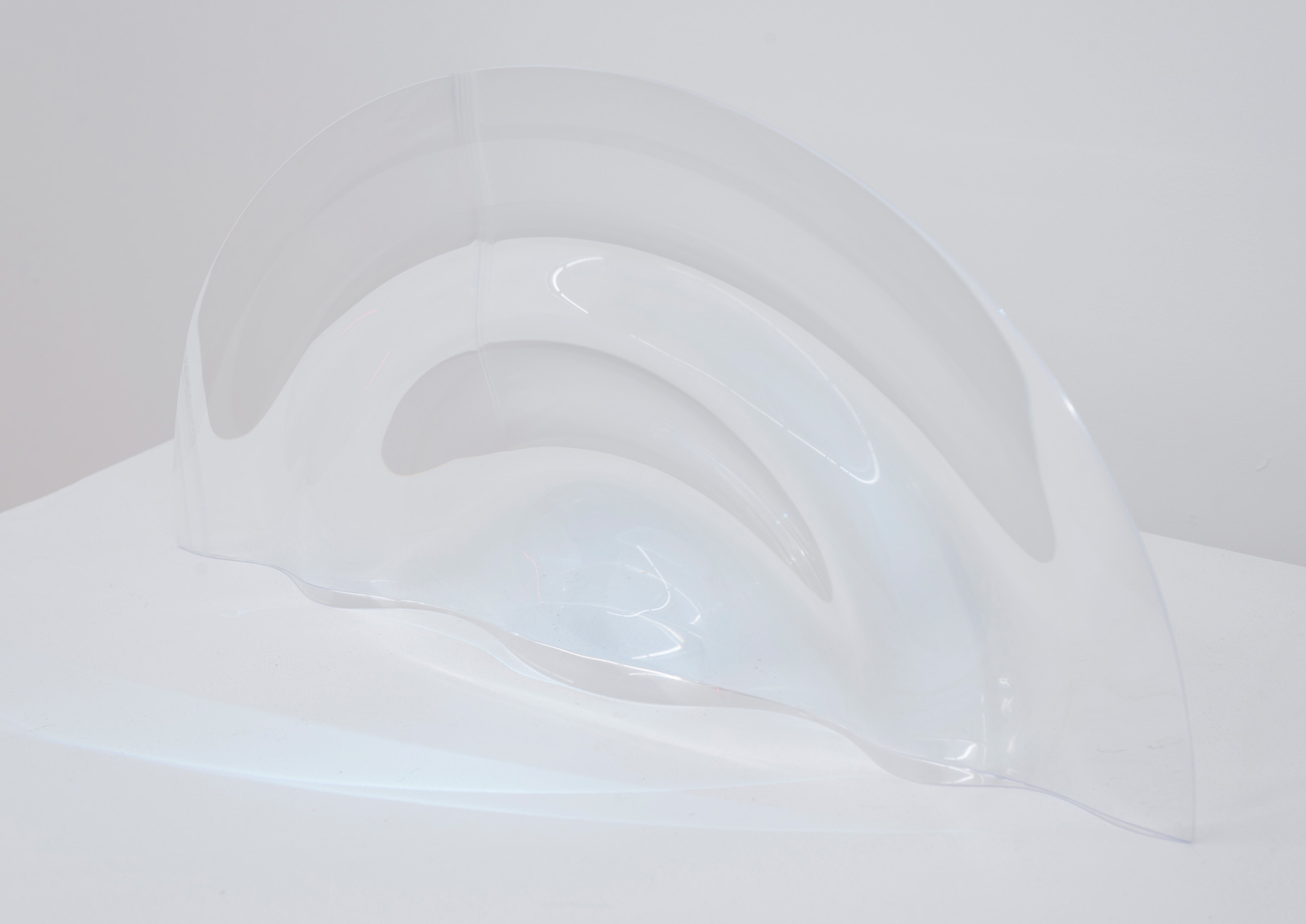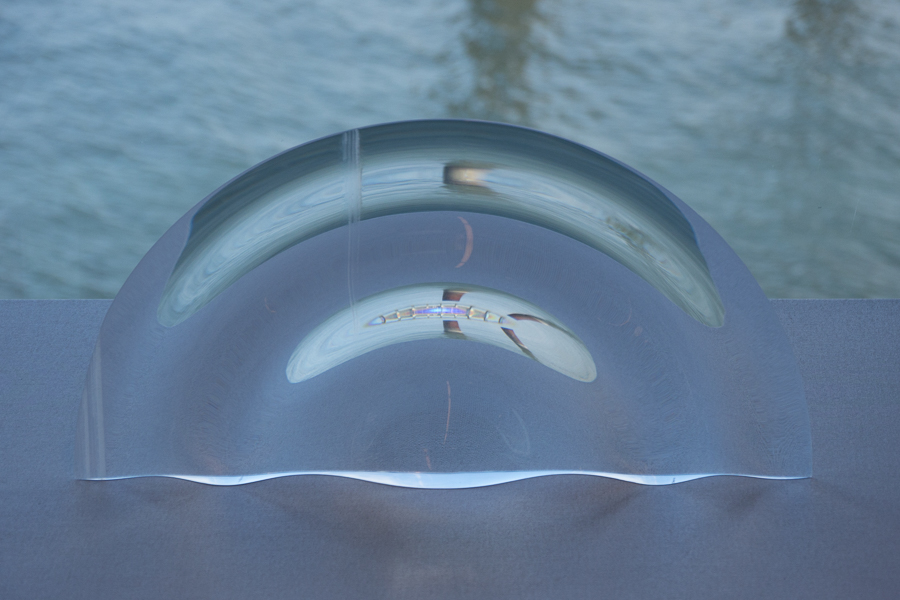




OPTICAL SURFACE STUDIES
How can objects be made to take on and emphasize the ephemeral qualities of the environment and the light around them? Can they, at the same time, offer experiences of sensing one’s own visual perception? Can these small visual disruptions in a space become strong enough to cause people to slow down and ‘sense themselves sensing’ the space? In order to create such visual experiences on an object scale, their perceived effects need to be more concentrated than if they were at the immersive scale of a building. This asks for materials and surfaces that are very responsive to light.
The results of these first tests are objects with surfaces that react to ambient light and their surrounding spaces with different techniques and in different orientations. It’s important not to focus too much on the object itself, but rather on the visual and spatial experience that it provides.
OPTICAL SURFACE STUDIES: REFRACTION
The two-sided lens geometry of these transparent acrylic objects bends light as it passes through, concentrating and dispersing it through refraction. The light is visually amplified into bright caustics that are cast onto the surrounding space. As a side effect of the lens geometry, the object distorts the surroundings that are seen through it, offering a moment of visual disruption.